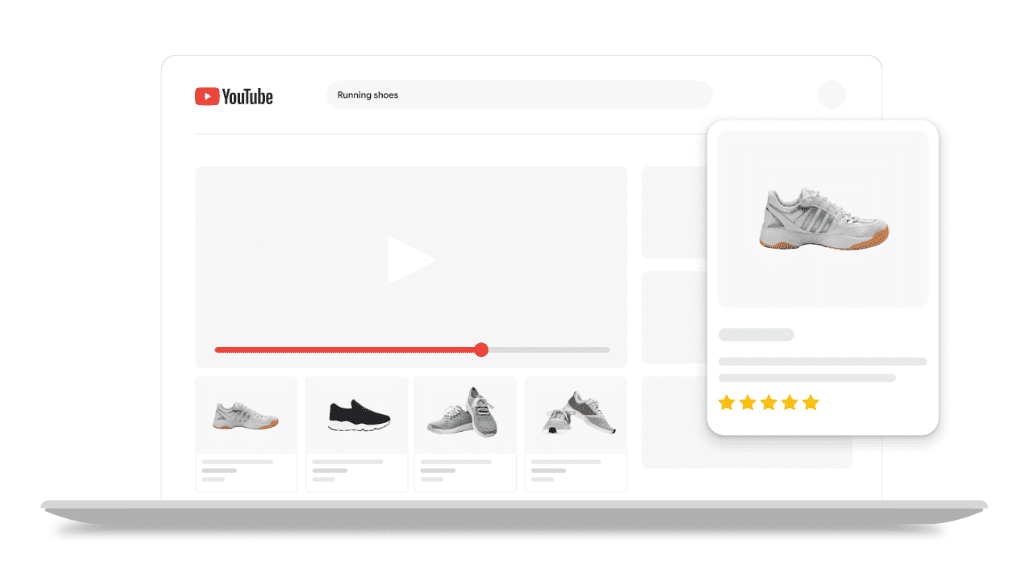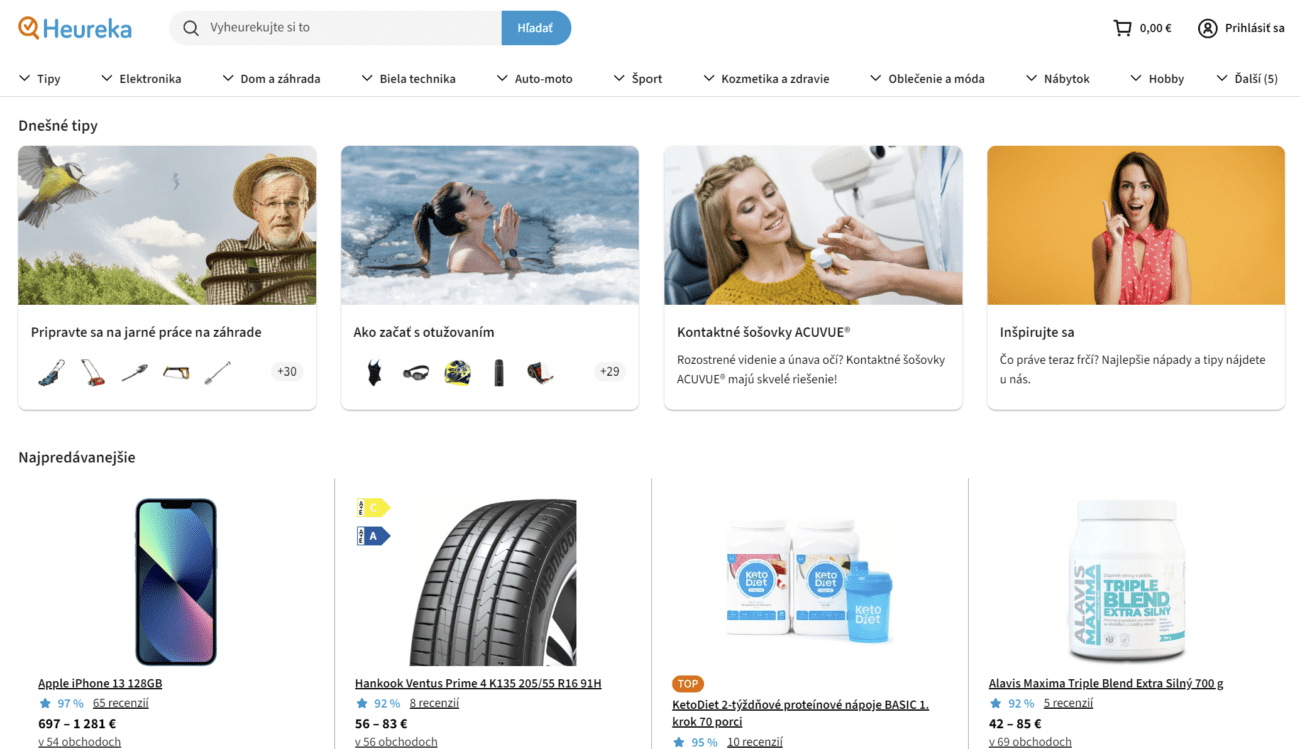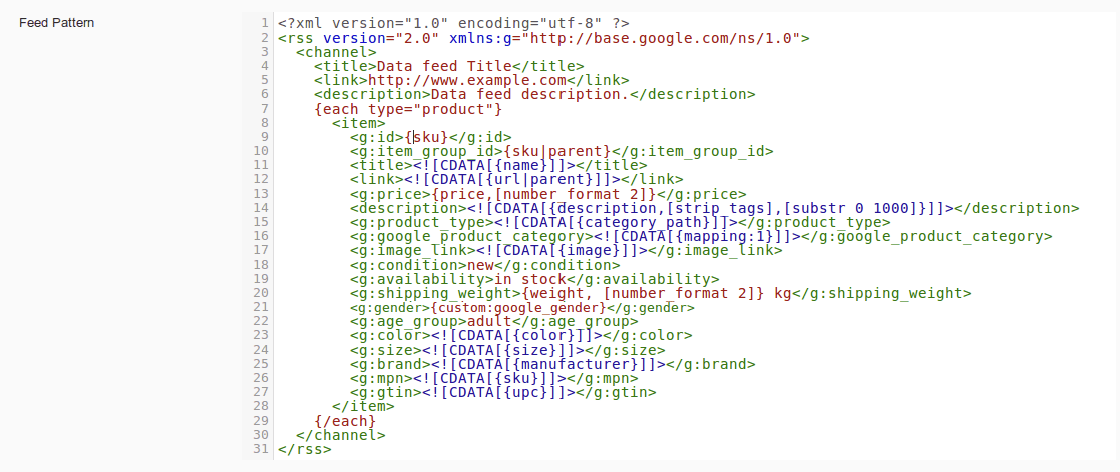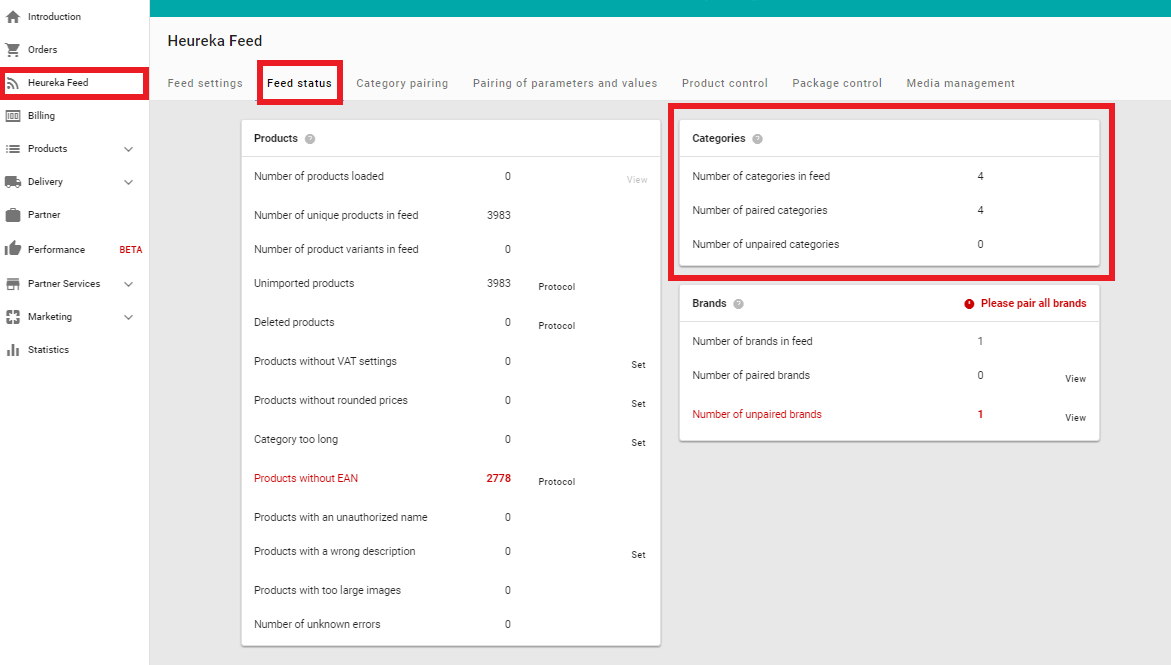This article was written in collaboration with experts from Mergado.
What is an XML feed?
An XML feed is a file in a specific format that allows for structured storage and organisation of data. This data includes news, blog articles, products in the online store or various statistics and information about events.
What is an XML feed used for in e-commerce?
In e-commerce, XML feeds serve as a means to quickly and accurately update product information on a variety of platforms, including price comparison sites, social networksWhen were the first social networks created and which network was Facebook inspired by? Which networks are among the biggest in 2023? More, and online marketplaces.
This saves time for all parties – not only for large companies and their omnichannel strategies, but also for individuals and smaller online stores.

In practice, this means that the online store creates an XML feed containing detailed information about each product, including its name, description, code, price, availability and other attributes, which then pushes valid XML files on to other parties.
Product feeds usually follow a standard format that is specified by each target service or platform separately.
17 XML feeds for European e-retailers
In European e-commerce, there are a number of different XML feeds linked to global marketplaces and local comparison sites that are used to share product information with different platforms and channels. You will definitely have to face them when expanding abroad.
Each XML file has its own parameters and requirements that must be followed when creating and sending it to ensure its proper functionality and the successful sharing of product information.
Here, we will share with you a list of various XML feeds on the European e-commerce scene that should be of interest to every e-retailer.
Global marketplaces
1. Google Shopping XML feed: Allows online stores to make their products visible within Google search and on Google Shopping pages.
2. Amazon Marketplace Web Service (MWS): Thanks to Amazon Feed, you can sell your products directly through Amazon.
3. Facebook Product Catalog XML feed: It is used to share product information with Facebook and allows online stores to create dynamic ads and customise them for customers.
4. PinterestWhat is Pinterest Pinterest is a social media network - a so-called visual search engine that serves to find ideas and inspiration from across various... More Product Feed: This is used to share product information with Pinterest and allows those online stores who use it to offer their products on this platform as well.
CEE Comparators
5. Heureka XML feed: Used in Central and Eastern Europe. It is used to share product information with Heureka, which is one of the largest price comparison sites in the region.
6. Zboží.cz XML feed: Allows sellers to share information about their products with Zboží.cz, one of the largest Czech price comparison portals. You can also use this feed with Sklik, which offers PPC advertising on the Seznam.cz network.
7. Ceneo XML feed: It is used in Poland, where it allows sellers to share information about their products with Ceneo (one of the largest Polish price comparison portals).
8. Compari.ro XML feed: Used in Romania, it allows sellers to share information about their products with Compari.ro, one of Romania’s largest price comparison portals.
9. Price.ro XML feed: This also dominates in Romania. Sellers use it to share information about their products with Price.ro, another popular price comparison portal in Romania.
10. Árukereső XML feed: It is used in Hungary, enabling sellers to share information about their products with Árukereső (Hungary’s largest price comparison portal).

Price comparison sites in other European countries
11. Idealo XML feed: Used in Germany, Austria, France and other European countries to share product information with Idealo, one of the largest price comparison websites in Europe.
12. PriceRunner XML feed: It is popular in Sweden, Norway, Denmark and the United Kingdom. It is used to share product information with PriceRunner (a price comparison website).
13. Criteo XML feed: Allows marketers to create personalised ads based on product information and customer behaviour data.
14. Kelkoo XML feed: Used in Europe to share product information with Kelkoo (a price comparison website).
15. Zanox XML feed: It is popular in Europe for sharing product information with various affiliate networks and publishers.
16. Twenga XML feed: Used in Europe to share product information with Twenga (a shopping search engine).
17. XML feed Webgains: Used in Europe to share product information with various affiliate networks and publishers.
How to create an XML feed
If you are just starting out with your online store, a programmer can help you set up the XML feed generation for your store needs. Alternatively, in the case of an open source solution, you can use a suitable plugin.
With an out-of-the-box solution like Shoptet or ShopifyShopify is a cloud-based platform that allows individuals and businesses to create, manage and operate e-shops without the need for programming. More, you generate the XML feed within the administration of the platform.

Define fields and attributes
To begin with, determine which fields and attributes of the product data are required for the receiving platform or system. This information is usually provided in the documentation related to the platform you are trying to get your product feed onto.
Collecting and organising product data
Collect all product information that must be included in the feed such as ID, URL, title, category, price, description and any other relevant details.
You also need to organise the data in a consistent and standardised format (such as a CSV file).
Tip: Be prepared for the fact that each shopping feed has its own specifications. In 99% of the cases, it’s a matter of each portal and marketplace tailoring the attributes in the feed to their needs.
This is usually the biggest challenge, as most of the time the online store has its own structure and comparison engines/Google/Amazon always require a separately generated feed and customisation.
Choose a tool to manage your product feed
The capabilities of online software start at automating the handling of product data. The e-retailer uploads the input feed into the selected tool, which modifies it exactly according to the requirements of the advertising channel.
Advanced e-commerce platforms can help with additional tasks, like product segmentation, linking and translating feeds, or processing supplier data.
Automate your product feed management
The most common way to set up the advertisement and fix the aforementioned deficiencies is to manually edit the data. However, this option is lengthy and inefficient.
Still, optimising product data doesn’t have to be difficult if you have a reliable helper to hand. Rely on a flawlessly prepared feed thanks to the MERGADO Editor.
With its help, you can modify data feeds in bulk and automatically. You can upload your products to marketing platforms, marketplaces and product comparison sites, all from one single place. It handles both CPC and setting up pairing with ease.
Its services are used by marketers, marketing agencies, online stores, affiliate campaign managers and developers.
XML product feed generation
The product feed management tool is used to generate an XML product feed. The tool should provide the ability to export the feed as an XML file, which can then be placed on the receiving platform or system.
Feed testing and optimisation
Be sure to test the XML product feed to see if it meets the requirements of the receiving platform or system. Optimise the feed as needed. Make adjustments to fields, mappings, and other settings to improve its performance and accuracy.
How to eliminate errors in the feed
There are a number of common shortcomings that hinder advertising on comparison sites or marketplaces. We’ve listed the biggest ones here.
Pairing categories
In order for it to make sense to advertise on comparison sites, you need to have products in the right categories.
Pairing causes the online store to be associated with an existing product tab that is already ranked higher in searches than the individual products themselves. Classifying an item incorrectly may cost you a conversion.
Tip: It is more than likely that your product categories will not match those on the comparison site. This problem can be solved by preparing an additional category parameter that pairs your product with the exact same active category as appears on the comparison tool.

Product availability
Knowing whether or not goods are in stock is one of the key factors in the customers decision-making process. If you want to improve the performance of your advertising, check what delivery information you’re sending to comparison shopping sites and whether the distribution process can be sped up.
For marketplaces such as Google Ads, all products that are in stock, on order or sold out must be listed in the feed. Conversely, comparison engines only require information on products that are available and in stock.
Tip: The price of shipping can be your competitive advantage. However, few online stores pay attention to it closely enough. Take advantage of this. You can set the transport price in the comparison engine administration or in an XML or CSV file. If you take the file route, you can also differentiate special offers, goods with different margins, products from different categories or those from different manufacturers.
Product images do not meet the requirements
Eye-catching image advertising is the foundation of online sales. Make sure you get the product photos right and you won’t lose the customer at the very first decision point.
Basic image requirements include:
- a photo without watermarks, company logo or text,
- in sufficient resolution
- and preferably against a light background.
Tip: Image advertising is a complex marketing activity to which you need to pay due attention. Speed up the management of your image advertising on multiple ad systems at once with the Feed Image Editor app. This automated tool creates an attractive design in a few clicks.
Get help with your product feed
We are sure that you don’t need to convincing that setting up a product feed correctly is not easy. Literally everything can go wrong in the process and not even an automation tool will save you.
That is why our partners online stores are checked by a product feed specialist. This often reveals missing products, broken links and many other errors that the client is not even aware of.
If you’re not sure whether your product feed is set up correctly, get in touch and we’ll be happy to help.






